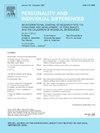Helping or holding back? How attachment relates to the regulation of others in close and distant relationships
IF 2.6
2区 心理学
Q1 PSYCHOLOGY, SOCIAL
引用次数: 0
Abstract
We examined how adult attachment orientations relate to the strategies people use to regulate others' emotions (extrinsic emotion regulation) across two studies. In Study 1 (N = 218), participants reported their use of eight strategies (e.g., valuing, receptive listening, humour, distraction, downward comparison, expressive suppression) alongside measures of attachment anxiety and avoidance. Anxious attachment was associated with greater use of high-involvement strategies — particularly valuing, listening, and direct action. Avoidant attachment was associated with lower use of these supportive strategies. Neither dimension was significantly associated with low-involvement, distancing strategies. Study 2 (N = 453) tested whether attachment effects varied by relationship closeness (romantic partner vs. acquaintance). Participants reported greater use of supportive strategies with romantic partners. Attachment avoidance predicted lower engagement across both contexts. Attachment anxiety predicted greater support use overall, but anxious individuals were especially likely to use receptive listening with acquaintances. Together, the findings suggest that attachment insecurity is systematically linked to interpersonal emotion regulation: anxiously attached individuals are active but possibly strategic regulators, while avoidant individuals disengage regardless of context. These patterns have implications for how emotional support is provided and received in close relationships. We discuss implications for attachment theory and interpersonal emotion regulation, and identify directions for future research.
帮助还是阻碍?在亲密和疏远的关系中,依恋是如何与他人的调节联系起来的
我们通过两项研究考察了成人依恋取向与人们用来调节他人情绪的策略(外在情绪调节)之间的关系。在研究1 (N = 218)中,参与者报告了他们使用的八种策略(例如,重视、接受性倾听、幽默、分散注意力、向下比较、表达抑制)以及依恋焦虑和回避的测量。焦虑依恋与更多地使用高介入策略有关——尤其是重视、倾听和直接行动。回避型依恋与这些支持策略的使用率较低有关。这两个维度都与低介入、疏远策略显著相关。研究2 (N = 453)测试了依恋效应是否随关系亲密程度(恋人vs熟人)而变化。参与者报告说,他们在与恋人相处时更多地使用支持性策略。依恋回避在两种情况下都预示着较低的参与度。总体而言,依恋焦虑预示着更多的支持使用,但焦虑的个体尤其可能对熟人使用接受性倾听。总之,研究结果表明,依恋不安全感与人际情绪调节有系统的联系:焦虑依恋的个体是积极的,但可能是战略性的调节者,而回避型个体无论在什么情况下都会脱离。这些模式暗示了在亲密关系中如何提供和接受情感支持。本文讨论了依恋理论与人际情绪调节的关系,并指出了未来研究的方向。
本文章由计算机程序翻译,如有差异,请以英文原文为准。
求助全文
约1分钟内获得全文
求助全文
来源期刊

Personality and Individual Differences
PSYCHOLOGY, SOCIAL-
CiteScore
8.50
自引率
4.70%
发文量
577
审稿时长
41 days
期刊介绍:
Personality and Individual Differences is devoted to the publication of articles (experimental, theoretical, review) which aim to integrate as far as possible the major factors of personality with empirical paradigms from experimental, physiological, animal, clinical, educational, criminological or industrial psychology or to seek an explanation for the causes and major determinants of individual differences in concepts derived from these disciplines. The editors are concerned with both genetic and environmental causes, and they are particularly interested in possible interaction effects.
 求助内容:
求助内容: 应助结果提醒方式:
应助结果提醒方式:


